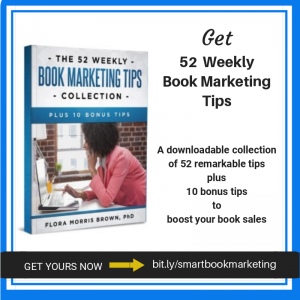 When you set out to write your book, you have ideas, steps, encouragement and more that you want to share. The easier you make it for the reader to grasp your key points, the better. Try adding a recipe to spice up your book.
When you set out to write your book, you have ideas, steps, encouragement and more that you want to share. The easier you make it for the reader to grasp your key points, the better. Try adding a recipe to spice up your book.
Almost any book can benefit from a recipe metaphor. All you need is a theme or objective, some ingredients and directions on how to mix them together. The beauty of recipes is that they are user friendly and we can understand them. Even a technical topic could benefit from being expressed as a recipe.
Your recipe could list general ingredients.
A book on happiness, for example, could list what researchers have discovered about the traits of happy people
- gratitude
- help others
- believe in a higher power
- practice being quiet and still from time to time
- laugh
- choose activities you enjoy
- hang out with happy people
- avoid toxic people
Your recipe could identify quantities of each ingredient.
A book on living a healthy life, for example, could list
- 5 fruits and vegetables daily
- 30 minutes of brisk exercise at least 4 times a week
- 8 hours of sleep nightly
- one ounce of water for every pound of weight
Your recipe can take on many forms. It’s important to remember that this is your recipe and therefore can be constructed whatever way you wish. Opinions vary on how much we need of anything, so you get to be the expert with your recipe.
You can construct your ingredients from the tips, steps and points you already share. Then be sure to discuss how those ingredients go together to yield the “dish” you are promoting.
Your recipe might be a metaphorical one or an actual kitchen-style one.
In Chapter 6 on Balancing Family and Work in my book, Color Your Life Happy: Create Success, Abundance and Inner Joy You Deserve, I stressed making family the highest priority.
In that section of the book I talked about our practice of cooking new recipes on Sunday afternoons when my children were growing up. One of those recipes became such a family favorite that to this day, decades later, every time I serve that recipe the guest always asks for the recipe. I had to include that recipe in my book, of course.
I won’t make you go over to buy the book in order to get that recipe. Over the years I’ve switched to ground turkey and fresh green chiles, but here is the original recipe as it appeared in the Los Angeles Times recipe section decades ago. Let me know how you like it.
California Zucchini Bake
1 pound lean ground beef
3 medium zucchini, thinly sliced
¼ cup sliced green onion with tops
2 teaspoons salt
¼ teaspoon garlic powder
2 teaspoons chili powder
1 (7 ounce) can green chiles, chopped
3 cups cooked rice
1 cup sour cream
2 cups shredded Jack cheese
1 large tomato, sliced
salt, pepper
Saute beef, zucchini, onion, salt, garlic powder and chili powder in a lightly greased skillet until meat is no longer pink and vegetables are tender crisp, Stir frequently. Add green chiles, rice , sour cream and 1 cup cheese. Turn into greased shallow 2 quart casserole. Arrange tomato slices on top, Season with salt and pepper to taste. Top with remaining cheese. Bake at 350 degrees 20 to 25 minutes
Do you want to talk about what recipe you can include in your book? I would love to be your partner in choosing a recipe that readers will find yummy. If you are ready to begin, pop me an email right now with “READY” in the subject line at [email protected] . Tell me about your book idea. Be sure to include your phone number and I’ll call you within 24 hours.
I’m going over to check for your email right now.












